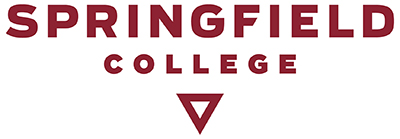College-level work requires attribution for information taken from outside sources. At Springfield College, it is expected that all students abide by the Academic Honesty Policy outlined in your student handbook.
Academic Honesty Policy
Springfield College students are expected to be honest in all elements of the academic process, including coursework, use of College documents, and when serving as representatives of the College. Cheating, plagiarism, misrepresentation of facts, omissions, or falsifications in any connection with the academic process are violations of the Academic Honesty Policy (hereafter referred to as the Policy). Students found to be in violation of this Policy are subject to a range of sanctions, including, but not limited to, a reprimand, failing a course, and suspension or expulsion from the College.
Yikes!
Thankfully, it's pretty easy to avoid getting in trouble if you cite the sources you find. You will learn about how to cite your sources effectively in the Writing Module. For now, let's begin reviewing techniques that will help you get started researching honestly and effectively.
Understanding the Assignment
The first part of research is to understand the assignment. And sometimes, this is the hardest part if the instructors are unclear. It's even more difficult if you never even see your instructor in person!
Remember: the easiest way to get an answer if you feel confused about your assignment is to ask your instructor for guidance.
Read on to learn how to choose and narrow down your research topic.
Determining Information Needs
You understand your assignment, have a topic to research, and now know the types of information sources that you need. The research foundation has been cemented you're eager to begin nailing the frame of your assignment together.
But as you begin your assignment in earnest, you may run into some problems. Maybe you have too little information or too many search results, or the focus of your topic has shifted the more information you discover.
This is normal!
The next section includes some frequent difficulties that new researchers face along with some strategies that can help you overcome them.
And remember: you can always ask your instructor, an Academic Success Coach, or Library Services, for assistance.
Peer-Reviewed Sources
You've probably heard a professor say that your sources should be peer-reviewed but what does that mean?
Peer-reviewed journals have an editorial board made up of people who are considered authorities in their field. They may be faculty members at a college or university or work directly in their fields. Whenever someone submits an article to be published, members of the editorial board read the article and make suggestions for edits. Once the author makes these changes, the journal will publish the article. Peer-review articles are considered reliable sources because the information is carefully verified to ensure quality.
In Using Library Resources, you'll learn how to search exclusively for peer-reviewed articles.
What does "critical thinking" mean?
Simply put, critical thinking is the process of analyzing information in an objective, unbiased manner. Critical thinking will help you see all sides of an issue so you can create better arguments and assignments.
Now that you know what critical thinking means, you can put those principles into action by using the CRAAP Test on the resources you've found. Evaluating the information sources you find is the first step toward becoming a critical user of information.
Using Information Ethically
Now that you've found some great sources to use in your assignment, it's time to put that knowledge to work. It's important to give credit where it's due -- especially in college-level assignments.
You will be required to credit all authors whose work you've used in your assignments. You'll learn the basics of how to cite your sources in the Writing module using either APA or MLA format depending on your instructor's requirements.
Next: Library Resources
